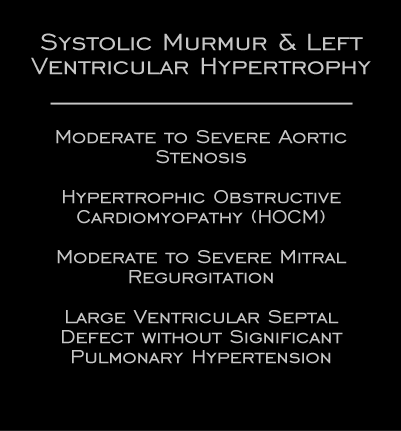The association of a systolic murmur with ECG findings suggestive of either right or left ventricular hypertrophy would indicate that the lesion was hemodynamically significant and, most likely, not of very recent onset. Electrocardiographic features suggestive of left ventricular hypertrophy would suggest the diagnoses shown here.

